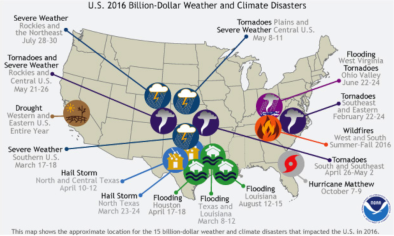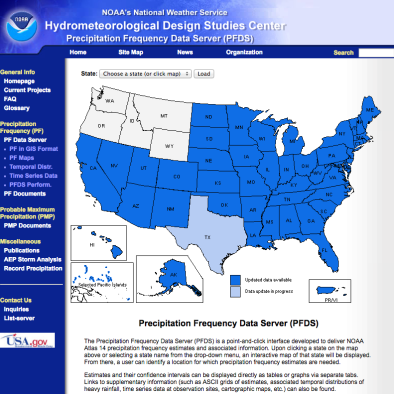Recent trends in U.S. flood risk
It’s almost like a separation where generally flood risk is increasing in the upper half of the U.S. and decreasing in the lower half. It’s not a uniform pattern, and we want to understand why we see this difference.
Gabriele Villarini, University of Iowa associate professor in civil and environmental engineering and study co-author on the paper
The river basins have a memory. So, if a river basin is getting wetter, in the Midwest for example, your flood risk is also probably increasing because there’s more water in the system.
Louise Slater, post-doctoral researcher, University of Iowa post-doctoral researcher and study co-author
Presents a novel approach assessing the trends in inundation frequency above the National Weather Service's four flood level categories (GH action, GH minor, GH moderate, or GH major; GH stands for "gage height") in 2042 catchments
Trends in the frequency of flooding above the four NWS flood thresholds are broadly consistent above the four flood categories and reveal a stark contrast between increases in flood risk around the upper Midwest/Great Lakes region and decreases on the Gulf Coastal Plain, the southeastern United States, and California
Finds that, in the West, California stands out with almost uniform decreases in flood frequency
Finds that localized increases in flooding in the Gulf of Mexico, near New Orleans, and selected locations in Florida are also visibly in agreement with flow data from NASA's Gravity Recovery and Climate Experiment (GRACE) satellites
States that while there may be local differences in river systems that have experienced anthropogenic modifications, the changes in flood frequency that are measured using gage height are largely consistent with previously observed increases in the frequency and magnitude of streamflow across the Midwest, the North, and North-East, as well as decreases in runoff and flood magnitude in the West and Southwest and coastal southeastern regions
Shows that regional patterns of increasing and decreasing flood risk are dependent on overall wetness and potential water storage, with fundamental implications for water resources management, agriculture, insurance, navigation, ecology, and populations living in flood-affected areas
Assesses the dependence of flooding on basin wetness and finds that locations with greater potential water storage are more sensitive to year-to-year fluctuations in basin wetness
States that the inclusion of the annual wetness predictor will substantially improve the prediction of flooding in these locations
Related Content




